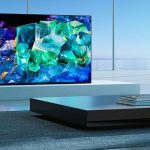AI-Powered Design Tools: Elevating Creativity through Intelligent Assistants and Auto-Generative Art
- Post
- August 7, 2023
- Design Tools, UI/UX Design, Web Design
- 0 Comments
In today’s rapidly evolving digital landscape, the convergence of artificial intelligence and creative design has sparked a paradigm shift in how we conceptualize, ideate, and execute design projects. The fusion of AI technology with design tools has given birth to a new era of innovation, wherein smart assistants and auto-generative art are becoming integral to the creative process. This article delves deep into the realm of AI-powered design tools, showcasing their potential to revolutionize the world of artistry and design.
The Dawn of AI-Infused Creativity
Harnessing the Power of AI in Design
In an era defined by data-driven insights, AI has emerged as a pivotal force across various industries, including design. AI-powered design tools leverage machine learning algorithms to analyze vast repositories of design data, helping designers identify patterns, trends, and potential directions for their projects. These tools have evolved from mere design aids to becoming creative collaborators, amplifying human ingenuity.
Redefining Creativity with Auto-Generative Art
Auto-generative art, a fascinating offspring of AI and design, redefines the boundaries of creativity. This form of art involves AI algorithms autonomously generating visuals, animations, and even music. The interplay between human intent and AI-driven randomness results in unprecedented artistic expressions that challenge conventional notions of creation.
Unleashing the Potential: AI-Powered Design Tools in Action
Dynamic Design Adjustments and Suggestions
AI-powered design tools act as intelligent partners, suggesting real-time adjustments and enhancements. These tools analyze design elements and offer insights to improve aesthetics, layout, and overall impact. Designers can iterate more swiftly and with greater precision, thanks to these AI-driven suggestions.
Personalization and User-Centric Designs
The infusion of AI allows for personalized design experiences. By analyzing user behavior and preferences, AI-powered tools enable designers to create tailor-made designs that resonate with specific target audiences. This level of personalization enhances user engagement and satisfaction, driving brand loyalty.
Time Efficiency and Iterative Ideation
Design iterations can be time-consuming, but AI-powered tools expedite the process. These tools swiftly generate multiple design variations based on specified parameters, enabling designers to explore diverse ideas in a fraction of the time it would traditionally take. This iterative ideation process fuels innovation and experimentation.
The Evolution of Design Technology: Examples of AI-Driven Tools
Adobe Sensei: Redefining Creative Intelligence
Adobe Sensei, a leading AI platform, empowers designers with advanced capabilities. From auto-tagging images to suggesting font pairings, Adobe Sensei enhances workflow efficiency. It even offers AI-powered features like Content-Aware Fill, seamlessly removing unwanted elements from images.
Canva’s Design Intelligence
Canva’s AI-driven Design Intelligence tool simplifies the design process for individuals with varying design expertise. By recommending layout options, color palettes, and font choices, Canva ensures that even beginners can create professional-looking designs.
Artbreeder: Where AI Meets Artistry
Artbreeder enables artists to blend and morph images using AI algorithms, resulting in truly unique creations. This tool encourages experimentation and enables artists to push the boundaries of their imagination.
Final Words
In the ever-evolving landscape of design, AI-powered tools have emerged as catalysts for creativity and efficiency. From offering intelligent design suggestions to enabling auto-generative art, these tools are revolutionizing how we approach artistic expression. Embracing these technologies unlocks a world of possibilities, where designers can amplify their creativity and redefine the boundaries of what’s achievable.
Commonly Asked Questions
Q1: Are AI-powered design tools suitable for all types of creative projects?
A1: Absolutely. AI-powered design tools can be applied across various creative domains, from graphic design and illustration to web design and animation. They adapt to the needs of different projects, enhancing efficiency and creativity.
Q2: How much control do designers retain when using AI-powered tools?
A2: Designers remain in control throughout the process. AI-powered tools act as collaborators, offering suggestions and insights, but designers have the final say in implementing changes and directions.
Q3: Can AI-generated art be considered authentic?
A3: AI-generated art raises questions about authenticity and authorship. While the AI contributes to the creation, the human artist’s intent and creative choices remain significant aspects that shape the final piece.
Q4: Do AI-powered design tools replace the need for human designers?
A4: No, they complement human designers. AI-powered tools enhance efficiency, offer insights, and speed up certain tasks, allowing designers to focus on higher-level creativity and strategic decision-making.
Q5: Are AI-generated designs protected by copyright?
A5: The legal and ethical considerations surrounding copyright of AI-generated art are still evolving. Current regulations tend to focus on the human involvement in the creative process. It’s essential to stay updated on legal developments in this area.



